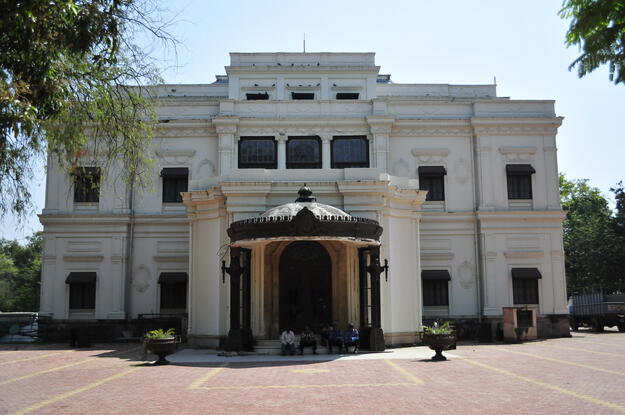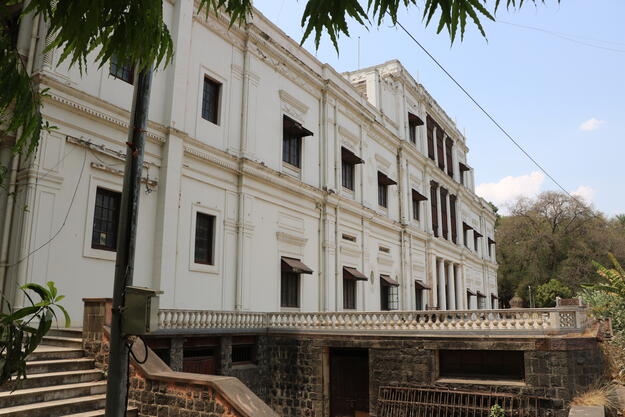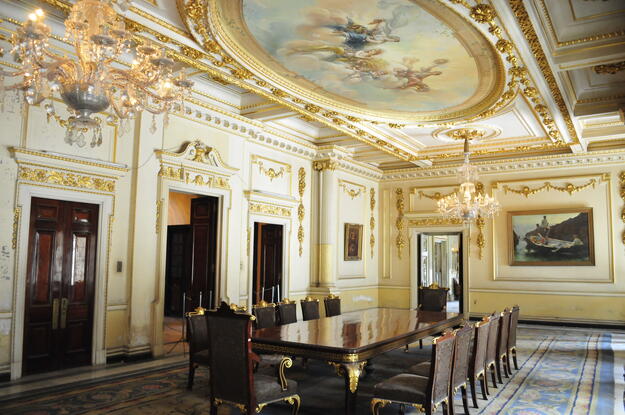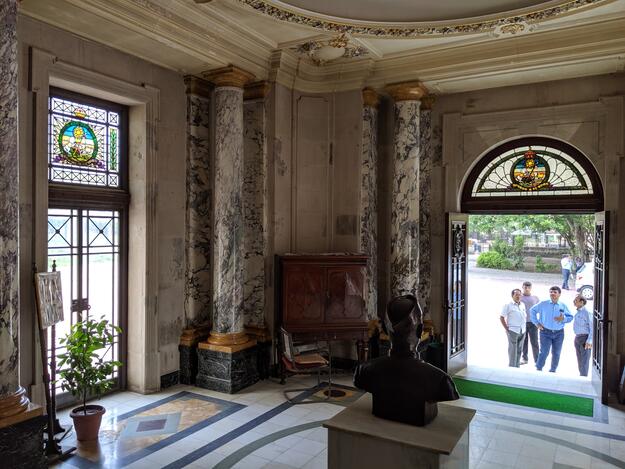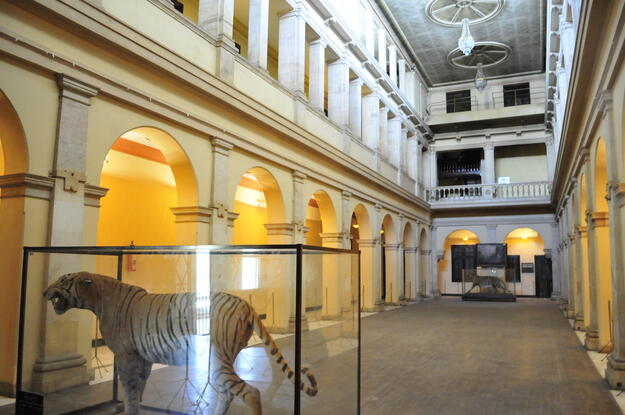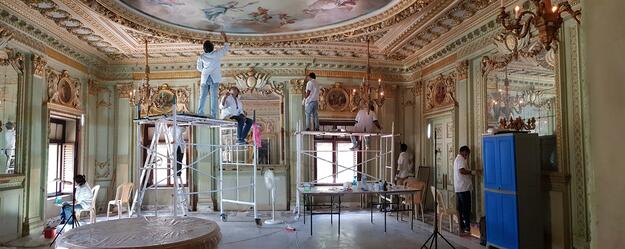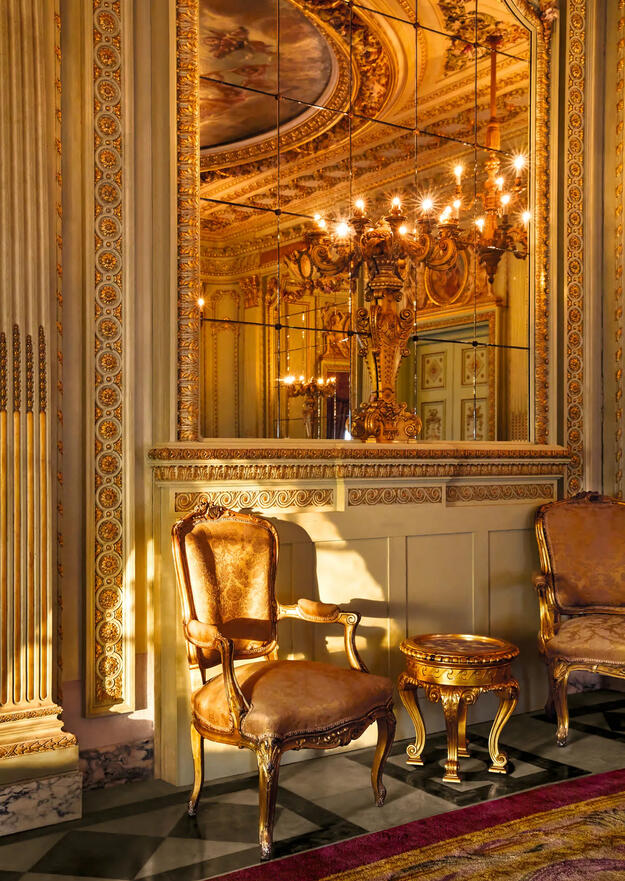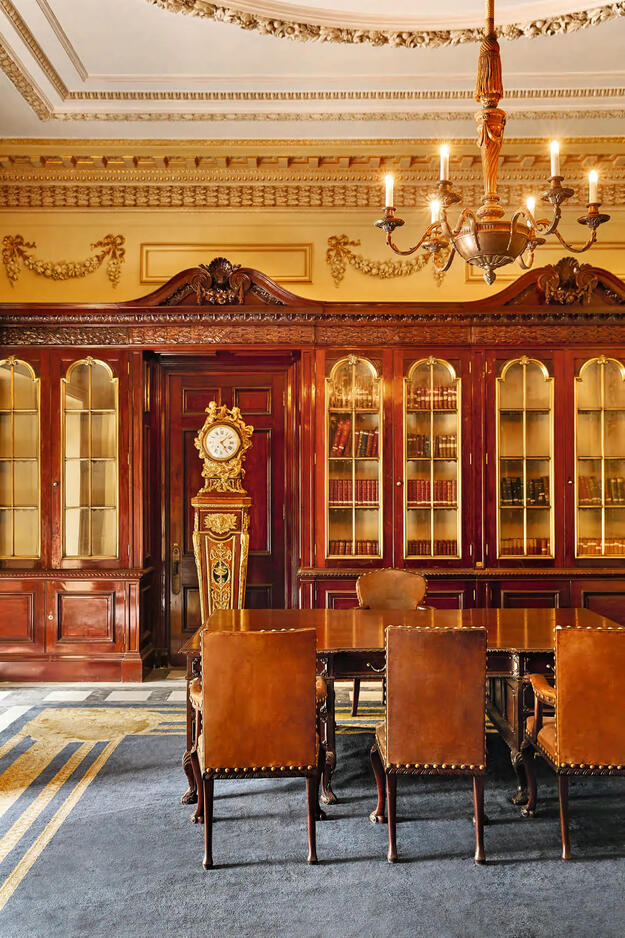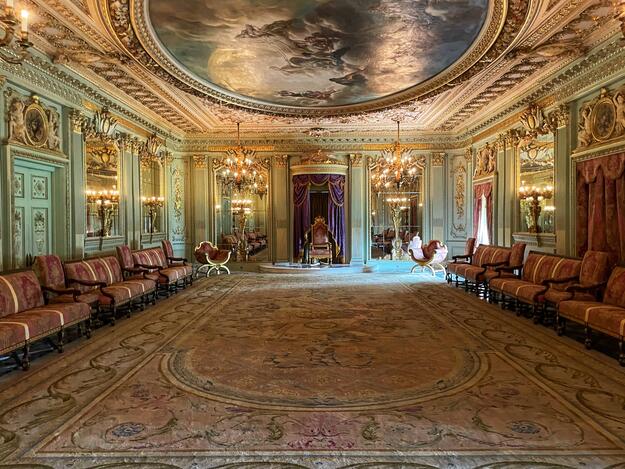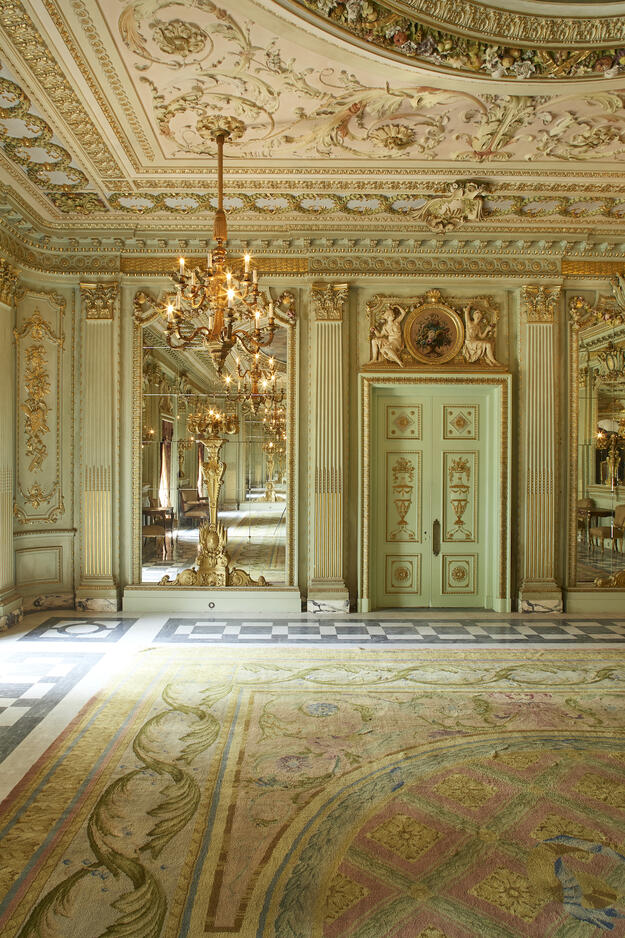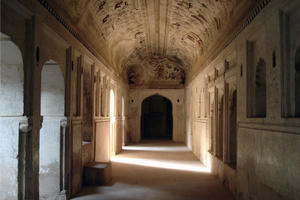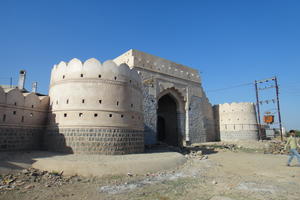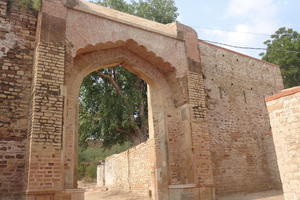Lal Bagh Palace
Site History and Significance
An Iconic Palace of Nineteenth-Century India
The construction of Lal Bagh Palace, or the Red Palace, began in the late nineteenth century and was completed in 1926 by the Holkar dynasty, whose leaders were some of the most powerful Maratha rulers of India. The architecture reflects Italian Renaissance Revival style, making it one of India’s finest neoclassical buildings. It is renowned for its European-influenced interiors, among the finest surviving from this period in India. The garden can be reached through Lal Bagh’s vast entrance gates bearing the Holkar coat of arms.
In the 1980s, the palace was handed over to the state government of Madhya Pradesh. Since then, it has faced the challenges of a very minimal budget allocation. As a result, though it is reputed to have been the best garden palace in central India, Lal Bagh is today in dire need of conservation. Peeling plaster, damage to the roof, water infiltration, and the faded splendor of the richly furnished rooms all require urgent attention.
Our Involvement
The Madhya Pradesh Monuments Project
In 2011, World Monuments Fund (WMF) began working with the Madhya Pradesh government to realize a project covering a selection of approximately 40 sites across the state. The project included engaging consultants to assess, document, and plan for heritage conservation projects; developing conservation management plans; and monitoring the implementation of select work to completion. The Madhya Pradesh Monuments Project is intended to serve as a model of sustainable management for conservation projects in India and around the world. One of the most iconic palaces in Madhya Pradesh, Lal Bagh was selected as a Madhya Pradesh Monuments Project featured site.
Developing a Conservation Management Plan
Following initial condition surveys, in 2019, WMF and the Madhya Pradesh government undertook detailed surveys of the historic interiors of Lal Bagh Palace and developed a conservation plan. This restoration project was completed and handed over to the Madhya Pradesh Government in July 2022. Seven rooms, including the awe-inspiring Crown Hall, were restored by the conservation team.
The Madhya Pradesh government will make reuse of the palace its objective using a comprehensive approach that will ensure that Lal Bagh has a role in the life of the city of Indore, where the palace is located. The restoration of Lal Bagh will serve as a model for the conservation and sustainable management of other Indian palaces and will benefit local students and residents by providing access and new use to the site.
Learn More
World Monuments Fund safeguards cultural heritage around the globe, ensuring our treasured places are preserved for present and future generations.
Sign up for our newsletter to receive regular updates on our projects, stories from the field, upcoming events, and more!
![]()

